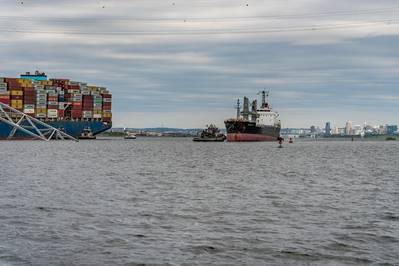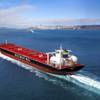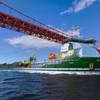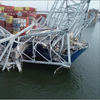First Ship Departs Baltimore Through Limited Access Channel
The first commercial vessel transited through a newly opened channel in the Port of Baltimore following the deadly collapse of the Francis Scott Key Bridge.
The Fort McHenry Limited Access Channel (LAC) was opened as a temporary solution to provide passage for a limited number of commercial vessels into the Port of Baltimore and a departure opportunity for some deep draft vessels currently unable to leave the harbor since the bridge collapse.
The channel—the fourth to be opened following the incident—runs the length of the northeast side of the federal channel and has a controlling depth of at least 35 feet, a horizontal clearance of 300 feet and a vertical clearance of 214 feet.
The first ship to transit the LAC is the Panamanian-registered bulk carrier Balsa 94, one of several ships that became stuck in port after the bridge collapse. The vessel is reportedly en route to Canada.
A few more ships followed Balsa 94 out of port after nearly a month trapped inside.
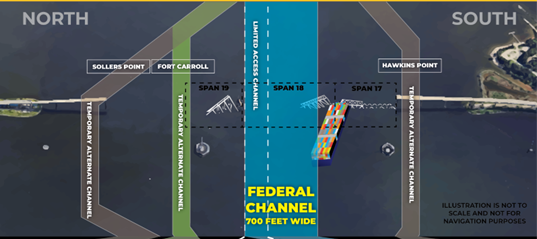 Infographic courtesy of Key Bridge Response 2024 Unified Command
Infographic courtesy of Key Bridge Response 2024 Unified Command
The LAC will likely close early next week to enable ongoing debris and wreckage removal work in support of operations to reopen the Fort McHenry Channel, officials said.
"We're working to strike a balance between enabling temporary access to support commercial activity and undertaking necessary measures to fully reopen the Fort McHenry Channel," said U.S. Coast Guard Capt. David O'Connell, Captain of the Port and Federal On-Scene Coordinator, Key Bridge Response 2024. "This limited access deep draft channel will provide a window for five of the deep draft vessels currently unable to depart the port as well as some smaller deep draft vessels to transit. Meanwhile, the Unified Command personnel continue to work full speed ahead to safely and efficiently finish operations."
The Francis Scott Key Bridge collapsed into the Patapsco River in the early morning of March 26, killing six men who were working on the span at the time, after the Singapore-registered containership Dali lost power and crashed into a support pylon.



